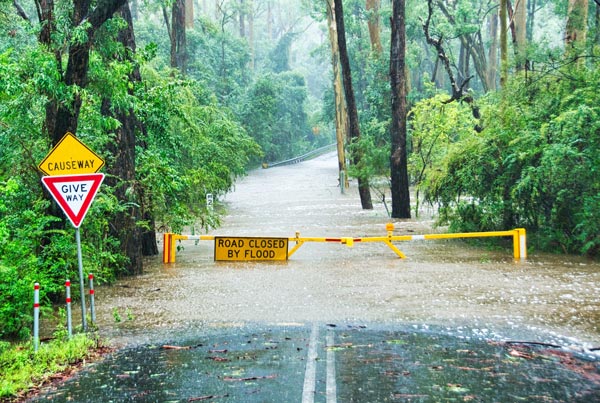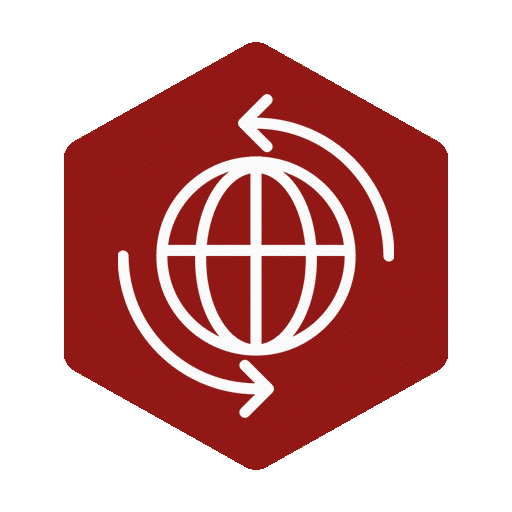
International Risk indicators
Four-dimensional risk indicator
In order to make informed decisions on topics such as site selection, investments and supply chain, various risks need to be considered. MBI’s 4-dimensional international risk indicator serves as a basis to support current and long-term corporate planning, as well as analyses and strategies.
This indicator is divided into the areas of political, social, economic and ecological risk. By combining these components, the indicator provides information on the potential overall risk. At the same time, looking at the individual components allows for a detailed insight. The four-dimensional risk indicator enables, for example, a holistic assessment of the sustainability aspects of investments and takes into account potential risks associated with political, social, economic and environmental factors. The indicator provides forecast values for the period 2024-2033, based on actual state analyses.
Compared to other risk data, MBI’s international risk indicator has a crucial advantage. It allows a global comparison of different types of risk at a glance. This is made possible by the use of globally consistent and comparable data, as well as by the practical aggregation into a single indicator by our experts.
Data basis from the expert
The risk indicator is calculated based on data from the comprehensive MBI portfolio. MBI can draw on 20 years of experience in producing current and accurate geodata. The underlying political risk is provided by experts in our CONIAS department. They have been monitoring conflicts around the world for 20 years and make them predictable. Why do we put so much data, knowledge, and work into developing the risk indicator? So that you can use a broad and carefully laid foundation to make data-based and well-informed decisions in various areas.
Components of the Risk Index
Risk Dimensions
Political
Violent / armed conflicts
Social
Social inequality and structural differences in the population
Economic
Operational and market risks for industries and companies
Ecological
Natural hazards and other climate change threats
Spatial Division
Subnational at regional level
Temporal Dimensions (Projection)
2024 – 2033

Political Risk Indicator
The political risk indicator is determined based on the number and intensity of violent or armed conflicts in a region according to the CONIAS SURE Index.
Benefit: Conflicts can pose a threat to employees, assets on-site, and your supply chain. Reduce these risks by identifying potential conflict areas in advance and creating a contingency plan. This plan could include alternative suppliers or fallback options.
Social Risk Indicator
The social risk indicator reveals social inequality and structural differences in the population.
Benefit: If a region has a high social risk indicator, it is worth taking a closer look at business relationships with companies operating there: For example, are suppliers exploiting and thus fuelling local social inequality? Make sure that your company produces with a focus on social justice. This will also help you meet the requirements of the Supply Chain Act and minimize reputational risks.


Economic Risk Indicator
The indicator for economic risks makes operational and market risks comparable for industries and companies worldwide. This approach helps to minimize the likelihood of misguided investments.
Benefit: The economic risk indicator provides information about operational and market risks that could indicate possible economic crises. Companies can take early measures to prepare for or counteract these risks. The economic risk indicator can also be used to identify promising foreign markets with lower risks and recognize opportunities for expansion and growth ahead of others.
Ecological Risk Indicator
The indicator for ecological risks quantifies the danger posed by natural disasters and other threats resulting from climate change.
Benefit: Due to climate change, people and businesses worldwide are increasingly threatened by natural hazards such as hurricanes, floods, or droughts. The ecological risk indicator enables companies to assess the potential impacts of climate change on specific regions. As a result, they can adjust their business strategies and implement protective measures to minimize risks and prepare for climate change.

KEY DIFFERENTIATORS

Globally consistent and comparable data basis

Strict quality control

Individual consulting and support

Continuous updating

100 % GDPR-compliant
COUNTRY AVAILABILITY
Europe | North America | South America | Asia | Oceania | Africa
DATA FORMATS
Text file (CSV/TSV) | KML | Access database (MDB) | Excel (xls) | Esri Shapefile (.shp) | Esri Geodatabase (.gdb) | MapInfo (.tab, tabx.) | MapInfo MIF/MID | GeoJSON | more on request
> LEARN MORE
TELL US WHERE YOU ARE HEADING.
WE WILL GLADLY ASSIST YOU IN SELECTING THE DATA NEEDED TO REACH YOUR GOAL.
Didn’t find what you are looking for or have another question? Please do not hesitate to contact us!
Our experts will be happy to advise you individually and without obligation on which data you can use to create added value for your company and realize savings.
Would you like to evaluate and visualize the data?